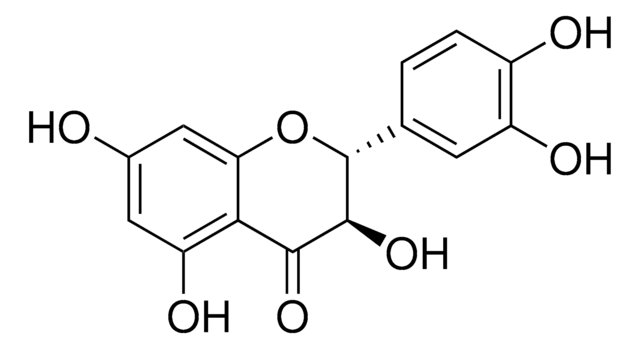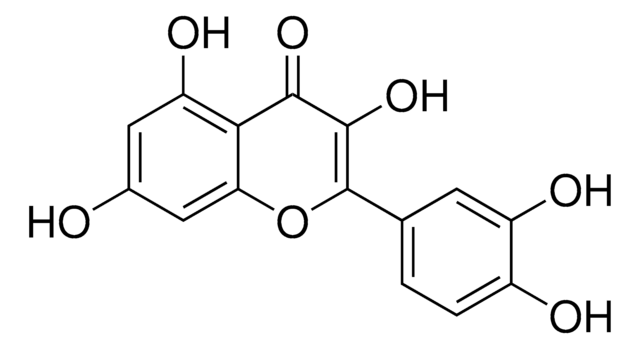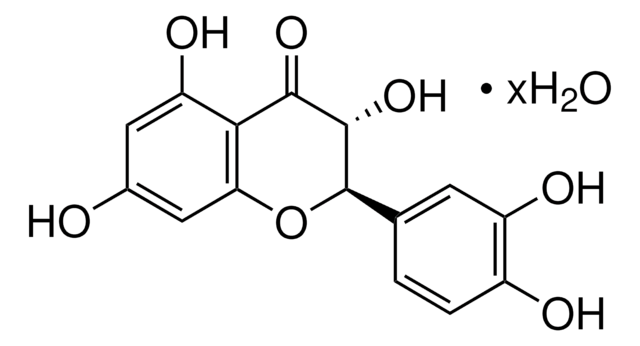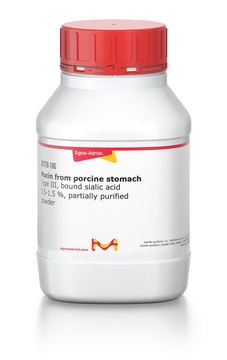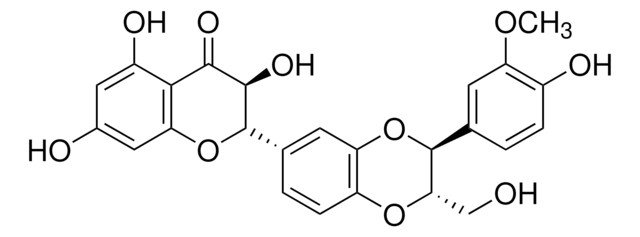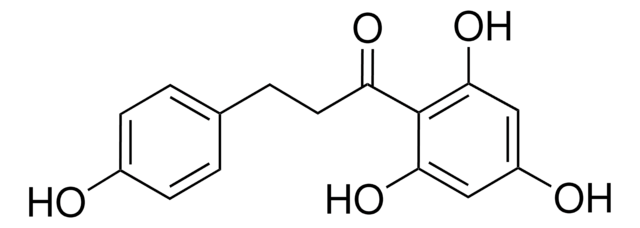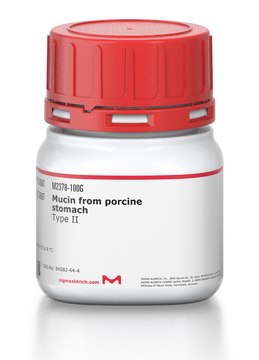T4512
(±)-Taxifolin hydrate
≥90% (HPLC)
Synonym(s):
3,3′,4′,5,7-Pentahydroxyflavanone hydrate, Dihydroquercetin hydrate
About This Item
Recommended Products
Quality Level
Assay
≥90% (HPLC)
form
powder
solubility
DMSO: 20 mg/mL
application(s)
metabolomics
vitamins, nutraceuticals, and natural products
storage temp.
−20°C
SMILES string
O.O[C@@H]1[C@H](Oc2cc(O)cc(O)c2C1=O)c3ccc(O)c(O)c3
InChI
1S/C15H12O7.H2O/c16-7-4-10(19)12-11(5-7)22-15(14(21)13(12)20)6-1-2-8(17)9(18)3-6;/h1-5,14-19,21H;1H2/t14-,15+;/m0./s1
InChI key
DNQPGSVMBPSRIR-LDXVYITESA-N
Gene Information
mouse ... Hexa(15211)
Looking for similar products? Visit Product Comparison Guide
General description
Application
Biochem/physiol Actions
Signal Word
Warning
Hazard Statements
Precautionary Statements
Hazard Classifications
Acute Tox. 4 Oral
Storage Class Code
11 - Combustible Solids
WGK
WGK 3
Flash Point(F)
Not applicable
Flash Point(C)
Not applicable
Personal Protective Equipment
Choose from one of the most recent versions:
Certificates of Analysis (COA)
Don't see the Right Version?
If you require a particular version, you can look up a specific certificate by the Lot or Batch number.
Already Own This Product?
Find documentation for the products that you have recently purchased in the Document Library.
Articles
Fatty acid synthesis supports cancer cell proliferation, essential for membrane generation, protein modification, and bioenergetics.
Antioxidants protect biological systems from oxidative damage produced by oxygen-containing free radicals and from redoxactive transition metal ions such as iron, copper, and cadmium.
Our team of scientists has experience in all areas of research including Life Science, Material Science, Chemical Synthesis, Chromatography, Analytical and many others.
Contact Technical Service